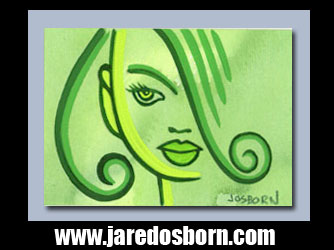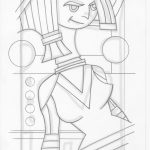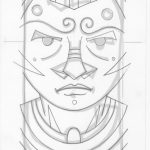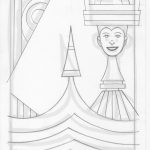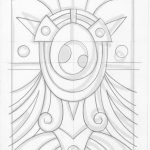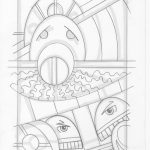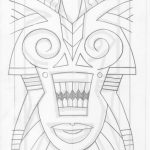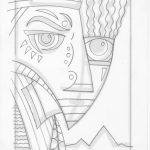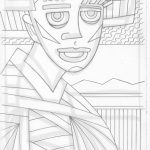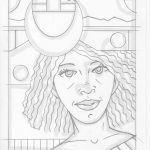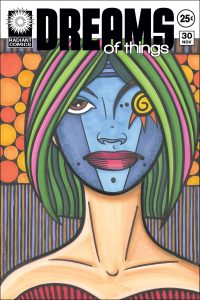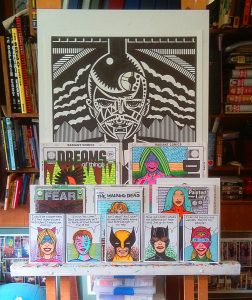In deciding what to write about this week I dug through a box of old drawings. I’ve got lots of boxes of old drawings. Some of the boxes are store bought and some of them are homemade. My fanciest store bought box is an 11x17x4 inch aluminum box. I don’t remember how much that one cost me but it must have been somewhere near fifty bucks. I can’t fathom now why I even wanted to spend that much money on a box to hold some of my art but I did. I must have made some extra money that month.
The aluminum one is a great box. It’s easily the best box I have to hold my drawings and it’s tough to describe how cool it looks and feels. The top totally separates from the bottom and it’s a matter of holding the top as the weight of the bottom slides away with tolerances so precise I cam feel a cushion of air between them. I wish all my art boxes were aluminum. That would be really cool.
The one problem I had with the metal box was that it was nearly an exact 11 inches wide. I had some of my favorite drawings and prints in mylar sleeves that made them slightly larger than 11×17 inches. So I couldn’t keep them in the sleeves if I wanted to put them in that box. A minor annoyance but an annoyance none the less.
The next type of store bought box that I have is the type that’s made out of archival cardboard. It’s closer to a matte board or a illustration board than the cardboard of a cardboard box. These are usually sold to store photographs and can get pricey but nowhere near aluminum box pricey. I only have a couple of these and I think I have photos in both of them. I remember liking them but thinking they weren’t quite sturdy enough for the price. Not that I was building pyramids out of them but when I spend money on a box I don’t want it to feel flimsy. On a flimsy to sturdy scale of one to ten I’d give these a seven. That means they were sturdy enough but not sturdy enough for the price.
The third type of store bought box that I have is one made out of a corrugated plastic. These ones are tough but ugly. Both the cardboard and the plastic ones are a clamshell design. One side of the box is hinged and the top and bottom pieces can’t be separated. The hinge is just the plastic or cardboard material compressed so it’s not the fanciest of designs. The tolerances on the plastic one are especially clunky.
In order to make the hinge work the bottom of the box has no wall on the hinge side. After closing the top it makes the missing wall for the bottom box. This design works fine for the stiff cardboard boxes but the plastic ones have too much give. Every time I try to close a plastic one the top and bottom hit each other and it doesn’t close smoothly. That makes the drawings slide around and block that open side from closing too. It’s not the end of the world and really only means that the box takes an extra four seconds to close but it annoys me every time. That’s the price I pay for the cheap boxes.
The next type of box that I have is the homemade ones. I’ve always liked making boxes but I usually make small boxes for art projects and such. I’ve made boxes that fit sets of my art cards, I’ve made boxes that fit small paintings, and I’ve made boxes to carry dice in. Whenever I needed a small box I’d make one.
When I used to play Magic the Gathering in the 1990s I made special boxes that were narrow so I could carry a deck of cards in my art portfolio. A normal box for MTG cards is about two inches thick (or more depending) and my portfolio was thinner than that. So I made boxes at a quarter that thickness but four times the width and height (2.5×3.5 inches). That made them much easier of me to carry. I even decorated those boxes with classical paintings pulled out of old wrecked art textbooks (which I think were from my college days working at a book warehouse). Those were cool little boxes.
I used to have all my drawings stacked in cabinets on shelves. That worked for a lot of years but eventually the stacks got too high. It was then that I decided to put all my drawings into boxes and it was then (over a period of time) that I bought all my store bought boxes. I eventually decided that none of them were perfect and I would make some boxes of my own.
I needed three size boxes that corresponded to the size paper that I used. 11×17, 9×12, and 5×11 inches. I’d want them a little bigger than that. I learned my lesson with the aluminum box. I decided I wanted a plan so I measured everything out and built a diagram with measurements on it in Adobe Illustrator. That way there would be no mistakes. I decided to make the boxes out of foam core board because it was sturdy. I could have chosen the cheaper route of matte board but it was too flimsy. I didn’t want to put in all the work for flimsy.
I measured out and drew one of the designs on a piece of foam core board. Then I cut it out with a straight edge and an X-Acto knife, folded it in the proper places, and taped all the edges. Foam core board is a quarter inch thick so the edges are broad and vulnerable to breaking. Tape helps out with that. I repeated this process about ten times until I had all the boxes I needed. It took a while.
In the end I think my box design depended too much on tape. I used a white paper tape that lasts a long time and the boxes are solid but they look a little sloppy. They’re not out in the open so no one ever sees them but every time I take them out I notice. I’m still glad I got them made because it makes storage a lot easier. Too bad they couldn’t all be really cool aluminum.
